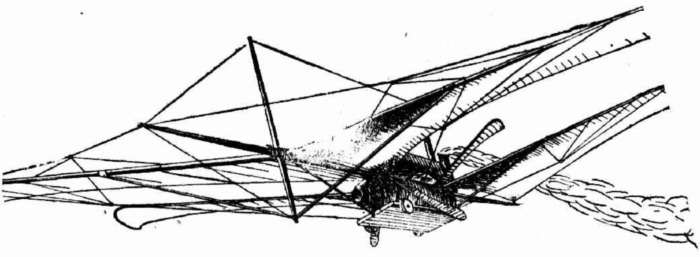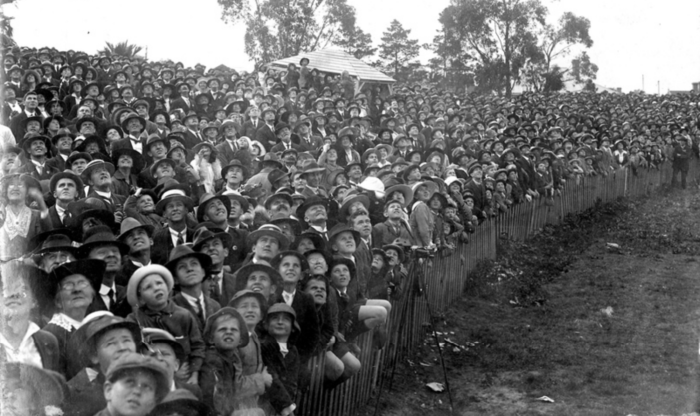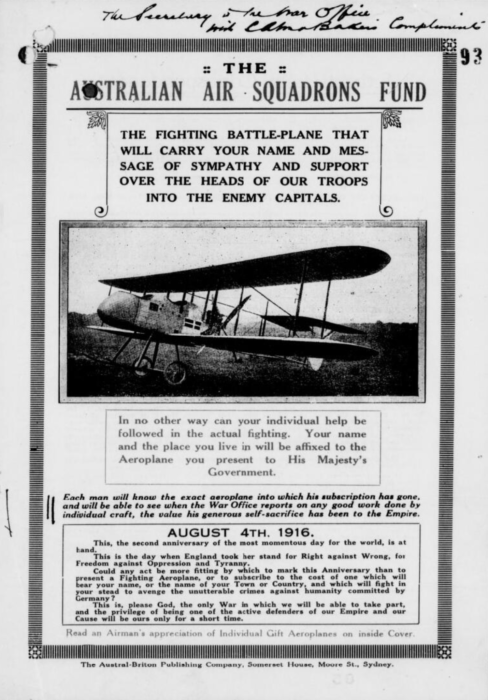My article, 'The meaning of Hendon: the Royal Air Force Display, aerial theatre and the technological sublime, 1920–37', has been accepted for publication in Historical Research (the journal of the Institute of Historical Research). I'm not sure when it will be published yet, and I can't self-archive the post-peer-reviewed version until 24 months after publication. The submitted, pre-peer-reviewed version I can self-archive now, however. There are some substantial differences between the two, mainly in the historiographical discussion in the introduction, as well as some errors I caught after submission, but the two versions are close enough that I'm happy to post the submitted version now -- and here it is. This is the abstract:
The annual Royal Air Force Display at Hendon was a hugely popular form of aerial theatre, with attendance peaking at 195,000. Most discussions of Hendon have understood it as 'a manifestation of popular imperialism', focusing on the climactic set-pieces which portrayed the bombing of a Middle Eastern village or desert fortress. However, scenarios of this kind were a small minority of Hendon’s set-pieces: most depicted warfare against other industrialised states. Hendon should rather be seen as an attempt to persuade spectators that future wars could be won through the use of airpower rather than large armies or expensive navies.
There are three things I wanted to do with this article, which to some extent are independent of each other. The first is to push against the prevailing historiographical understanding of the RAF Display as primarily imperialist and racist propaganda. This is the one thing that everyone 'knows' about Hendon, and I've written that myself, but it's wrong. As noted in the abstract, my case here is primarily numerical and chronological: only a quarter of the set-pieces were 'imperial', none of them after 1930. This doesn't necessarily invalidate discussions of those specific set-pieces as imperialist and racist propaganda, because they were, but we need to recognise that they were not what Hendon was mainly about.
So the second thing I wanted to do was to offer an alternative reading of Hendon, and that is as 'one long argument for airpower supremacy' (to quote myself). Most of the set-pieces involved industrial (and so presumably European) targets: factories, power stations, and so on. (See my posts on the Hendon set-pieces.) These were targets that only the RAF could attack. Other set-piece targets, such as siege guns and merchant cruisers, could have provided an opportunity to portrary cooperation with the Army and the Navy, but didn't (a point I could have made more strongly in the article). So Hendon was 'a cultural projection of what David Edgerton terms liberal militarism' (to quote myself again!)
The third and final thing I wanted to do with this article was to showcase the usefulness of aerial theatre. I've already given the concept an outing in my article on 'The militarisation of aerial theatre', but Hendon was of course the biggest and best air display in interwar Britain and so it's the ideal case study -- if the concept has any validity at all! I've also tried to link aerial theatre to the concept of the technological sublime; again, I'll be interested to see what others make of this.
This is not my final word on Hendon, by any means, but it's a good start.







